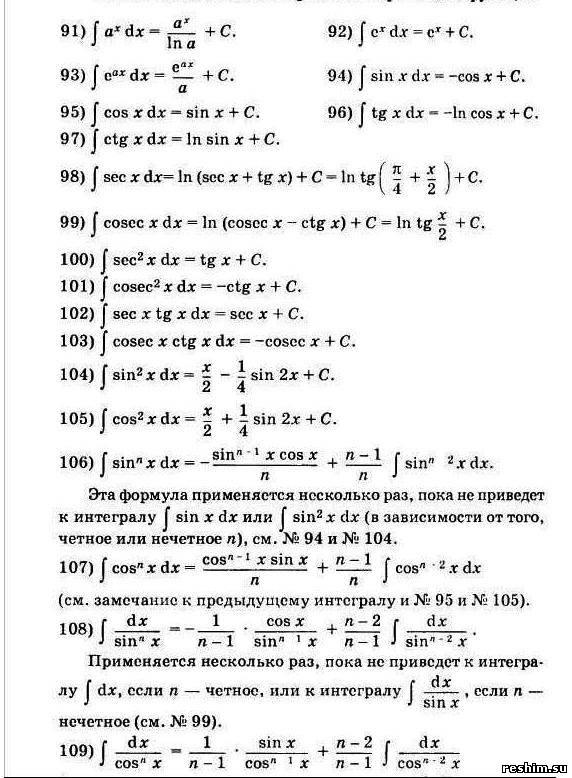Polnaya Tablica Integralov Dlya Studentov
понедельник 19 ноября admin 84
Dlya polucheniya bolee podrobnoi informacii obratites' k stranice spravochnika rc.conf (5). Sleduyushaya tablica opisyvaet deistvie kazhdogo profilya bezopasnosti. Kolonki pokazyvayut vybrannyi vami profil' bezopasnosti, a ryady -- programmy ili funkcii, kotorye profil' vklyuchaet ili vyklyuchaet.
Good: A book that has been read but is in good condition. Very minimal damage to the cover including scuff marks, but no holes or tears. The dust jacket for hard covers may not be included. Binding has minimal wear.

The majority of pages are undamaged with minimal creasing or tearing, minimal pencil underlining of text, no highlighting of text, no writing in margins. No missing pages. See the seller’s listing for full details and description of any imperfections. Supercopier 22 beta exe download. Year: 1965 Subject: Math Country/Region of Manufacture: Russian Federation Publication Year: 1965 Format: Paperback Language: Russian Educational Level: High School Product Type: Textbook ISBN: Does not apply.
Collection History The materials in this presentation comprise the illustrational (and, in selected cases, textual) content of nearly 100 published works dating from the period circa 1830 to 1935, although there are individual titles dating from the 18th century, as well as high-quality, limited edition 19th-century reprints of much earlier materials. The illustrations represent an equally broad variety of production techniques which range from wood block printing, engraving (some hand-colored) and etching, to lithography, chromolithography and photo offset printing.
Thematically, these volumes are highly diverse. It is, in essence, a 'culturological' collection, documenting not only art and architecture, but also topics ranging from archaeological digs to typeface design and subway planning. It must be emphasized that the content of these albums is not strictly Eastern European. Russia was a globe-spanning Empire, and, like other great powers, sought to document the peoples, lands, and resources in its dominions. As a consequence, a large number of the volumes digitized here were produced within the borders of the Russian Empire and Eastern Europe, but concern places and subjects that are neither geographically nor ethnically Slavic or East European. For example, there are plate books concerning pre-Classical, Classical (Greek and Roman), Byzantine, Islamic, and Asian civilizations.
Get notifications on updates for this project. Get the SourceForge newsletter. Get newsletters and notices that include site news, special offers and exclusive discounts about IT products & services. How to Make a FATX Drive. The FATX file system format is used on the Xbox 360 console. Despite both being Microsoft products, the FATX file system is unrecognizable by the Windows operating system. In order to format a drive in the FATX format, you’ll need to do so on the Xbox 360 console itself. Once formatted, it can be used as a storage device for the console. Fatx format tool xbox 360. Formatting tools. Format any physical device to FATX specifications! -A new and improved transfer system with a very informative transfer dialog. The transfer speeds are MUCH faster. For example, on a 500gb disk, it would take about 30 seconds to inject a 1kb file. With v2.0, it takes about 20 seconds to inject hundreds. USB FATX Formatter by LegendaryFire USB XFAT Formatter Download There are a few VERY easy steps to get it working. 1) Format the USB stick as FAT32 or FAT. About 15 seconds into the format, unplug the USB drive. 2) You should get a message saying the format could not be completed. Download Free FAT32 Formatter Tool. FAT32 works with all versions of Windows, Mac OS X and Linux. Practically, most USB drives are pre-formatted with FAT32. And most game consoles, such as PlayStation, require external USB drive FAT32 format. FAT32 has a limit that files larger than 4GB can't be stored on a FAT32 drive.
Russia's ethnographers, botanists, restorers, travelers, and archaeologists ranged all over the globe, documenting natural and man-made wonders wherever they occurred. One encounters, for example, illustrated 19th century travel accounts of the Ionian islands, Greece, and Turkey, architectural drawings of the Norman Palatine Chapel in Palermo, and the Russian Archeological Commission's work on Eastern silver. Origins The richness of the Russian and related materials is due to a happy coincidence of historical events.
One of the parent collections of the NYPL was the Astor Library, founded in 1849 upon the personal collection of fur-trader and real estate mogul John Jacob Astor (1763-1848). Very well-funded by Astor's endowment and by the generosity of subsequent generations of his family, the Astor Library sought to be a universal, 'international' collection, and rapidly surpassed far older collections in quantity and diversity. Many of the significant plate volumes in the collections today--particularly those dealing with exploration, botany, and archaeology--still bear the book stamp of the Astor Library. Although materials in Cyrillic script were not yet a collecting priority, many Russian works came to the Astor and Lenox libraries during this period because of the leading role of Russian and Eastern European researchers in 19th century world scholarship. The spreading fame of the collection attracted donations of material from writers and scholars from Eastern Europe, as well gifts from the Tsars themselves.
Alexander II, for example, donated to the Library works on the archaeological exploration of prehistoric settlements in the Crimea, and a facsimile of the Codex Sinaiticus. The Lenox Library, another parent collection of NYPL, while focused primarily on Bibles in all languages (including the first Gutenberg brought to America), also included folio rarities.
